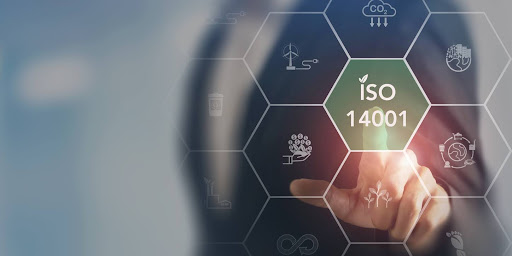ISO 14001 is an internationally recognized standard for environmental management systems as established by the International Organization for Standardization (ISO). It provides a framework for designing and implementing sustainable practices to minimize your organization’s environmental footprint.
For The Pursuit of ISO 14001 Accreditation
ISO 14001 accreditation demonstrates your commitment to developing eco-friendly policies to reduce waste, use resources efficiently, and limit carbon emissions.
Despite the focus on environmentally friendly solutions, one area that’s often overlooked by businesses is sustainability in IT. IT-related emissions continue to grow, in fact, Gartner forecasts IT-related greenhouse gas emissions to increase by about 30% per year unless actions to limit the impact from data centers, cloud utilization, digital workplaces, data, and software usage are taken.
Environmental management systems (EMS) are key to achieving ISO 14001 certification. An EMS is a structured approach to identify, manage, and improve sustainability.
Besides becoming better stewards of the environment, there are also practical business reasons to implement EMS strategies. Reducing resources saves money. Many companies and government entities also require suppliers or contractors to be ISO 14001 certified. Without gaining this accreditation, you may miss out on business opportunities.
ISO 14001 Certification: Key Requirements and Challenges
Achieving ISO 14001 environmental management system certification requires meeting several key requirements, including:
- Establishing an environmental policy that aligns with the organization’s activities, products, and services
- Identifying and assessing the environmental aspects and impacts of the organization’s operations
- Developing and implementing an EMS that addresses legal and other requirements, as well as environmental objectives and targets
- Allocating resources and assigning roles and responsibilities for the effective implementation and maintenance of the EMS
- Providing training and awareness programs for employees to ensure their competence in managing environmental aspects
- Conducting internal audits and management reviews to assess the effectiveness of the EMS and identify opportunities for improvement
- Maintaining documentation and records to demonstrate compliance with the standard
While the checklist appears straightforward, there are challenges in achieving ISO 14001 accreditation. A lack of expertise and resources can hinder organizations. Businesses may struggle to assess their environment and incorporate effective strategies to meet these goals — especially in light of a constantly evolving set of environmental compliance concerns. For some employees, there may also be resistance to change, requiring a cultural shift within organizations.
How Managed IT Services Can Contribute to an ISO 14001 Certification
Managed IT services can help overcome these challenges so that your organization may meet the requirements necessary to achieve ISO 14001 certification. A managed services provider can assist you by:
- Tracking energy consumption and regulatory compliance with simplified data collection
- Document management systems to streamline reporting
- Secure cloud storage and backups to meet ISO 14001 requirements for data integrity
- Automated reporting using EMS data
- Efficient IT infrastructure that minimizes energy consumption
How Managed IT Services Support Key ISO 14001 Requirements
Let’s take a look at how managed IT services can apply to key ISO 14001 requirements to help overcome challenges and better prepare your company for certification. For example:
Clause 6 of ISO 14001 focuses on establishing objectives and targets for the most important significant environmental aspects (SEAs). EMS software from a managed services provider can help to set quantifiable targets, such as reducing energy consumption by X%. Targets can be tracked to monitor progress.
Clause 7 requires organizations to allocate sufficient resources to achieve goals, including people and technology. MSPs can ensure IT infrastructure is compliant and also help train employees on sustainability in IT.
Clause 10 talks about continuous improvement in environmental management. The right managed services provider can provide the data you need to track improvements against environmental targets over time.
Leveraging Managed IT Services for Environmental Impact
Managed IT services can also play a broader role in supporting your sustainability efforts. Deploying the right technology infrastructure and relying on experience from working with other companies, MSPs can help develop and implement an effective EMS.
IT solutions might include:
- Adding IoT sensors, remote monitoring, and data analytics to gather data
- Automation technology to optimize processes
- Producing data for environmental reporting
- Implementing corrective actions to improve sustainability efforts
ISO 14001 Certification Made Easier with Managed IT
Managed IT services not only streamline your workload and save money, but they can also make the pursuit of ISO 14001 certification easier. By providing the right technological solutions and supporting your data collection, you can document your efforts and work towards continuous improvement.
Partnering with Yorktel can help on your path to ISO certification. Yorktel’s managed services can alleviate some of the burden of complying with ISO 14001 IT requirements and help you create the compliant systems you need to meet your objectives.
Contact us today to find out how partnering with Yorktel can help build a foundation to achieve ISO 14001 certification.
